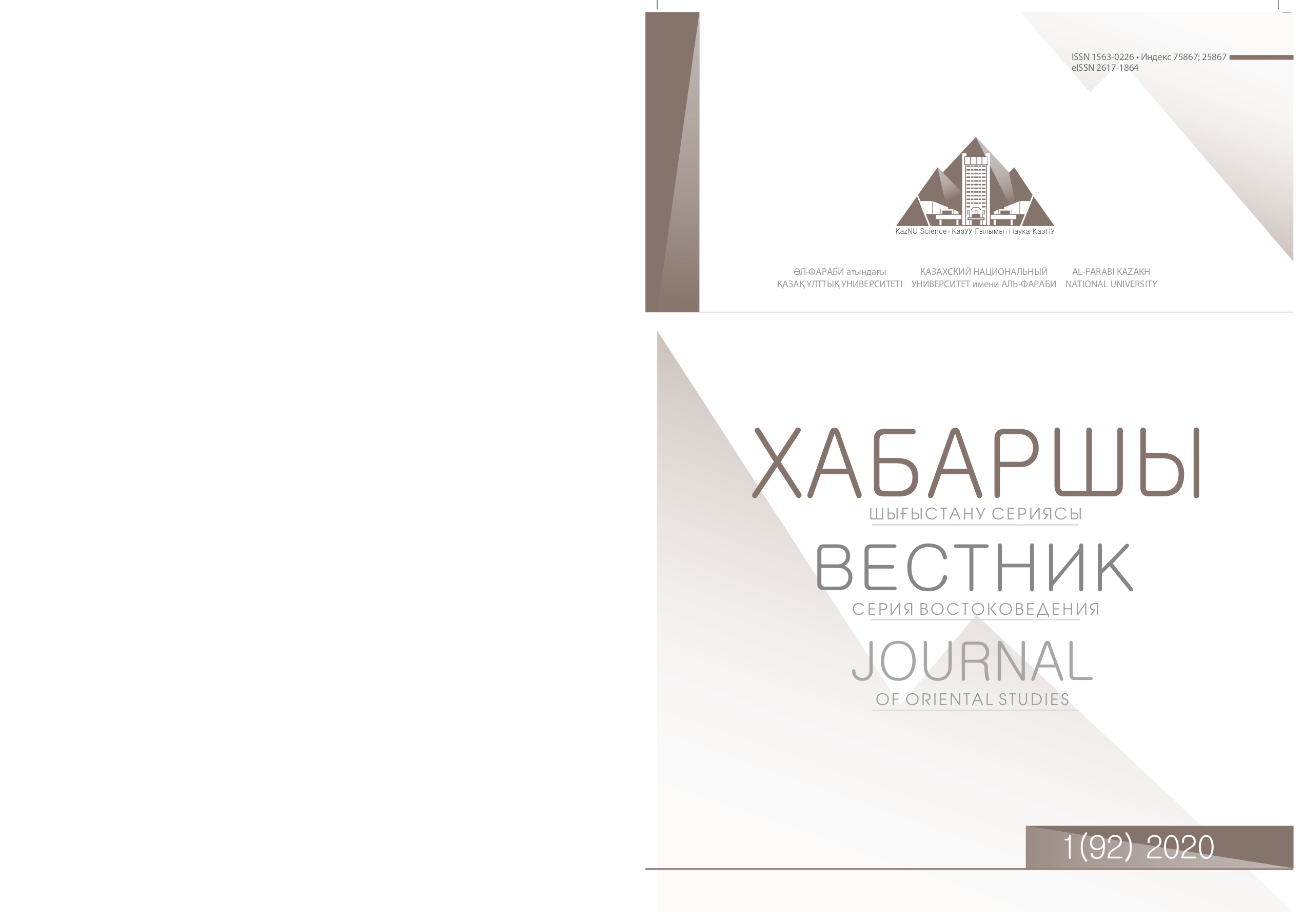The Written Works of Qarakhanid Period: Description of God
DOI:
https://doi.org/10.26577/JOS.2020.v92.i1.06Abstract
“Kutadgu Bilig, Diwani lugat at Turque, Hibat-ul-Haqqaiq” - the written memorials in Turkic language of Karahan epoch, which have reached our time. The monuments are distinguished by the fact that to abstract concepts related to the Islamic religion is given purely Turkic remarks. The wide Turkic layer, which refers to the Religious terminology, reflects the availability of religious terminological base of Turkic language in the epoch of Karakhan. This distinguishing feature of the language shows the socioeconomic environment and deeply engrained worldview of the Turkic language in accordance with its theology in the Karahan epoch. The word “Allah”, which is considered a fundamental notion of the Islamic world, is not used at all in the given works. This word is replaced by Turkic names, such as Tanri, Bayat, Idi / Izi Ugan. In our article we have made the lexico-semantic analysis of Turkic names of God. The analysis revealed that the name of Creator, as the lexeme of the Tanri in the ancient Turkic worldview was intertwined with the descriptions of Allah in the Islamic sense, but its inner meaning was somewhat changed. The words Bayat, Idi / Izi Ugan were formulated as religious terms on that epoch, and their source was Koran. These words are used as synonyms, but they are not the same in terms of frequency and range of usage. Key words: Karahan epoch, written memorials, Creator, Religious terms, worldview.




